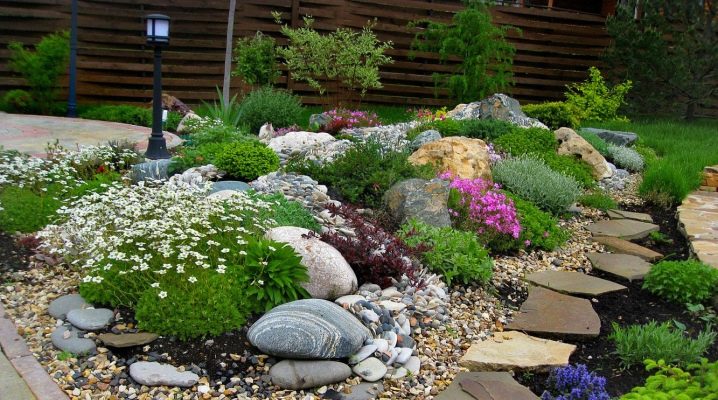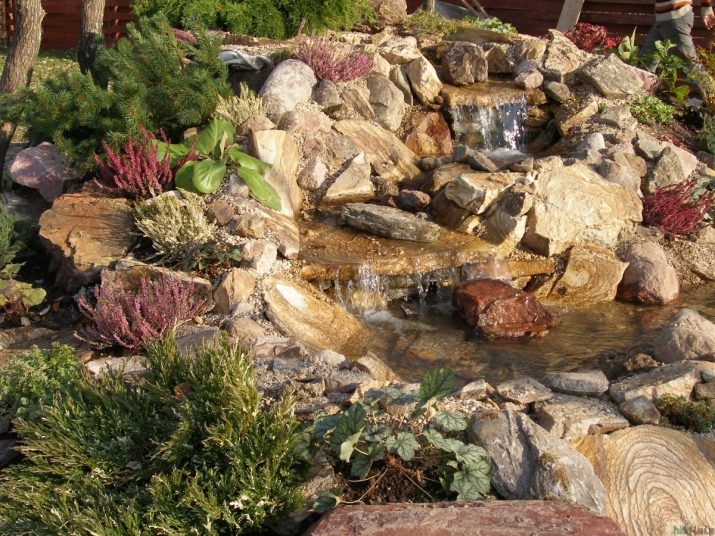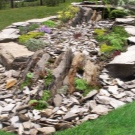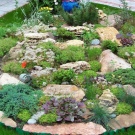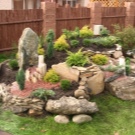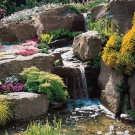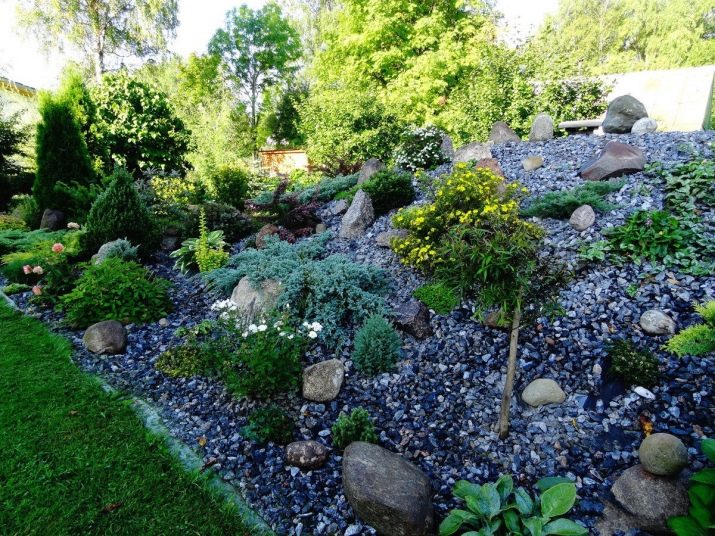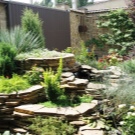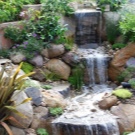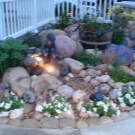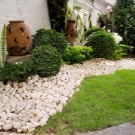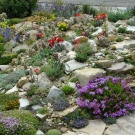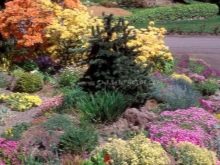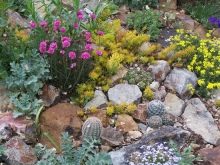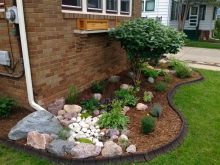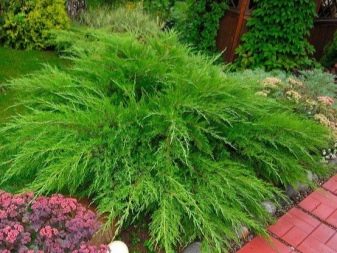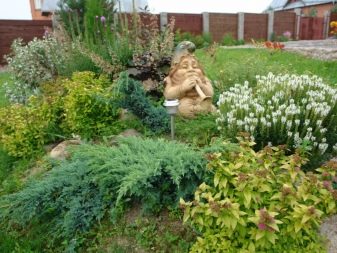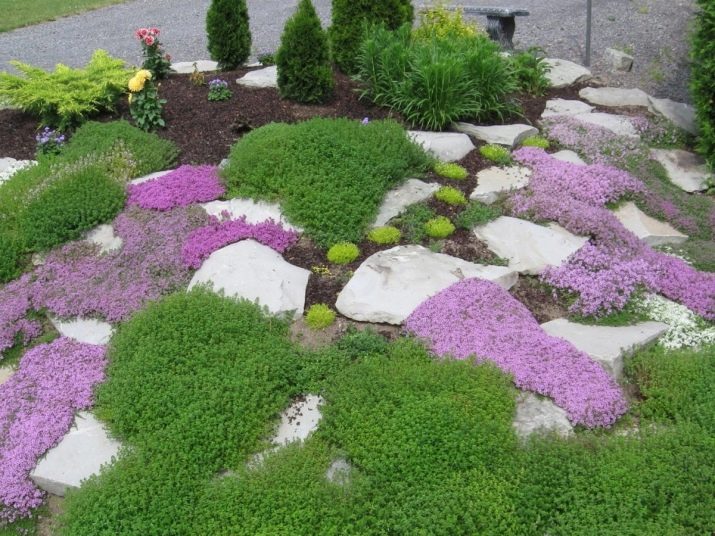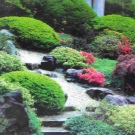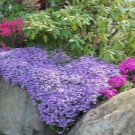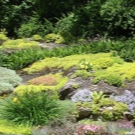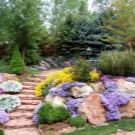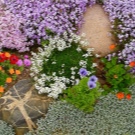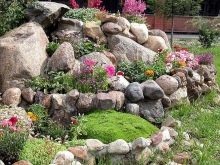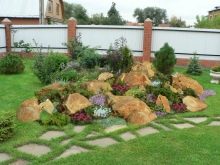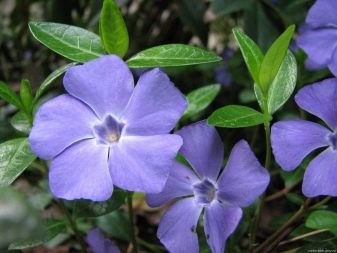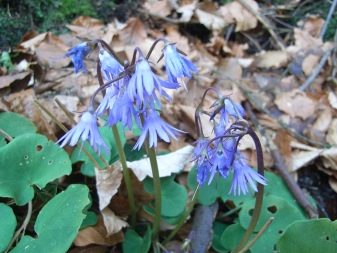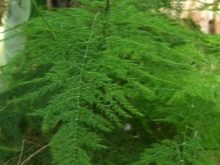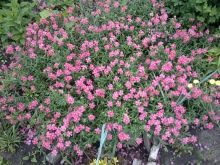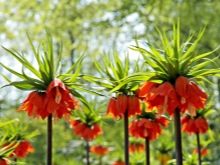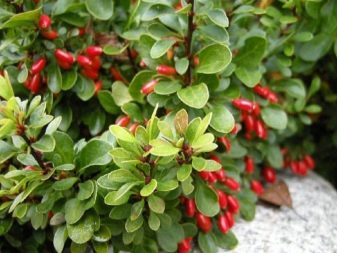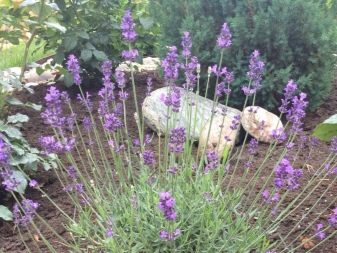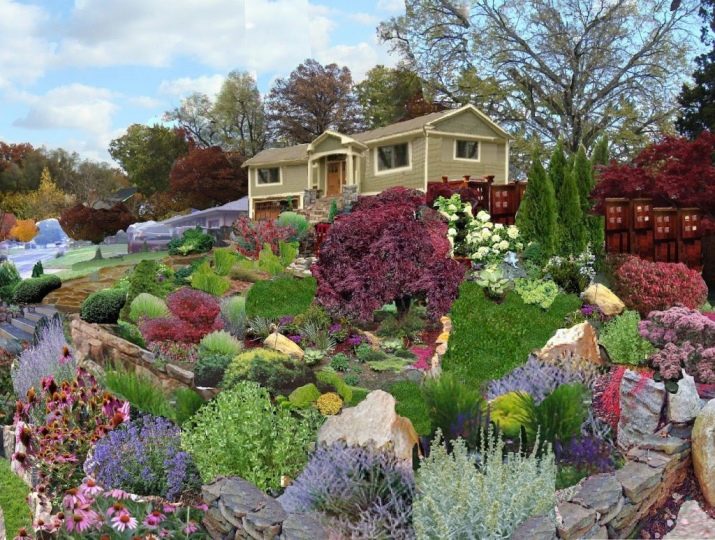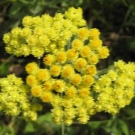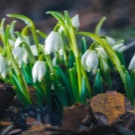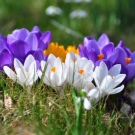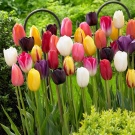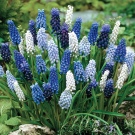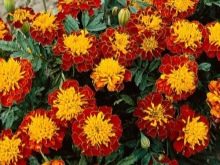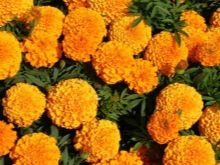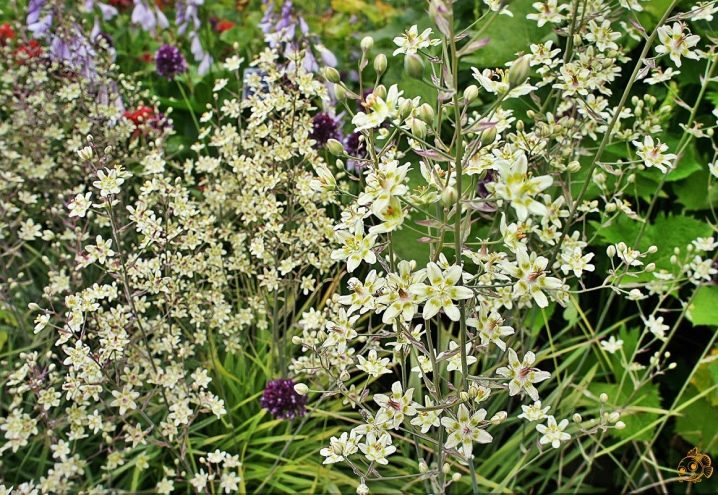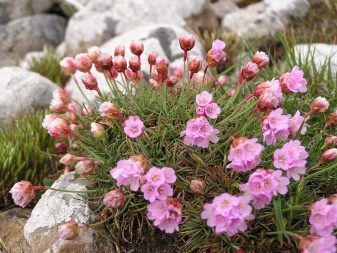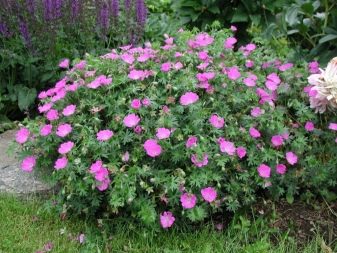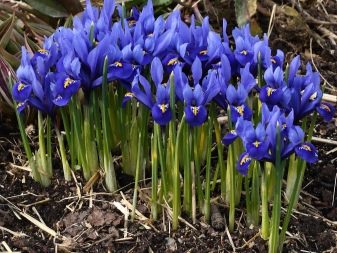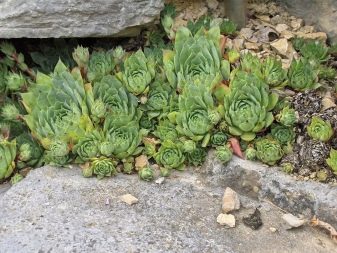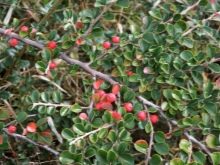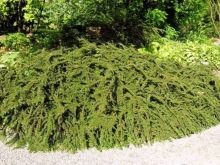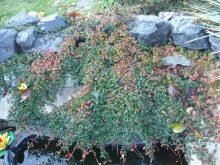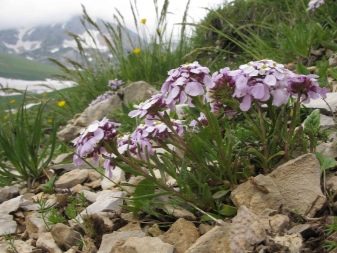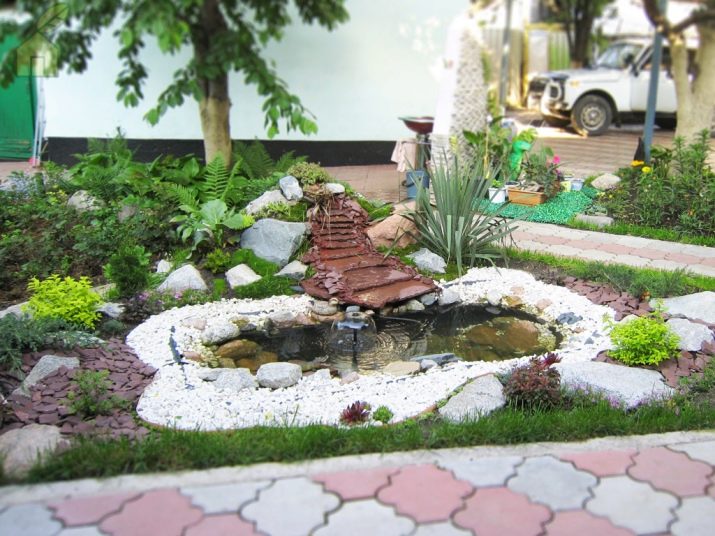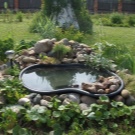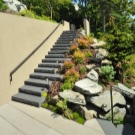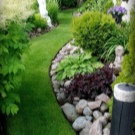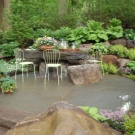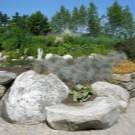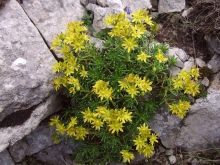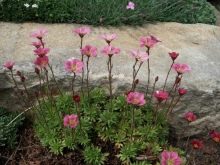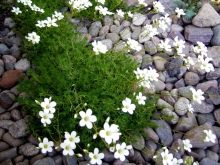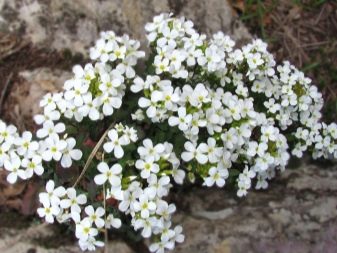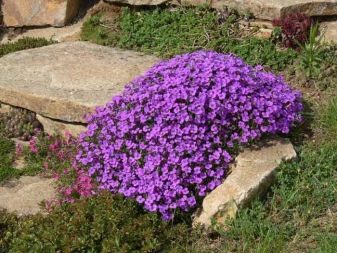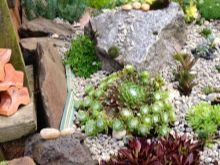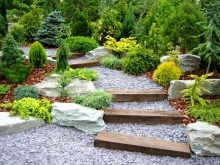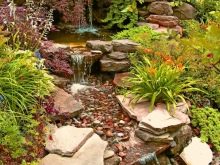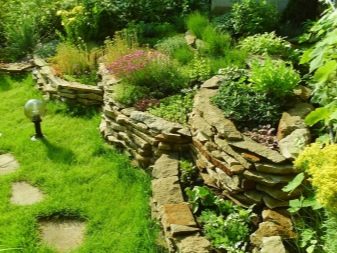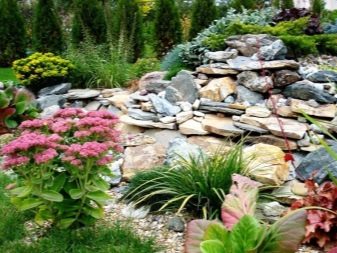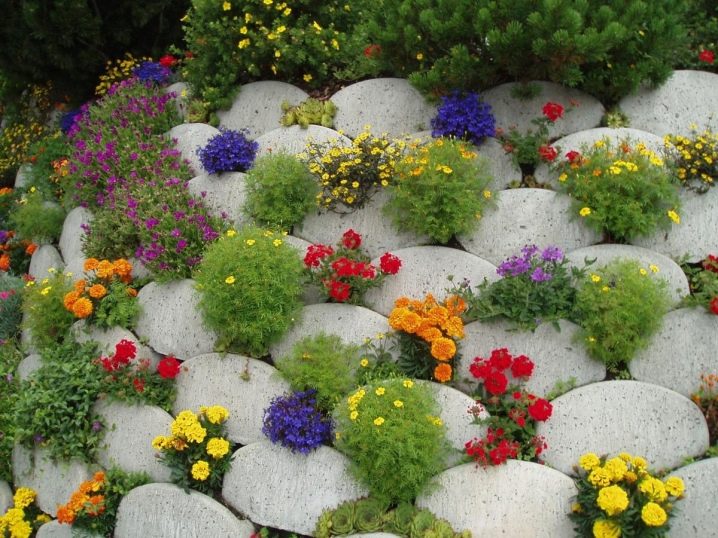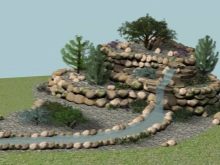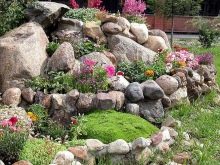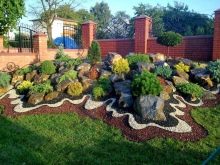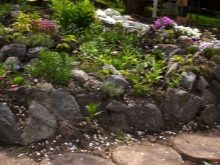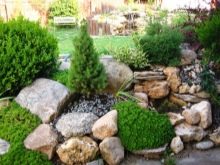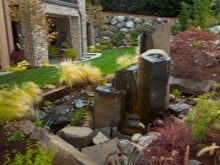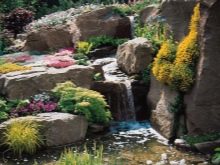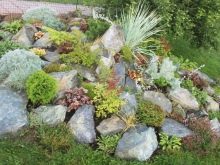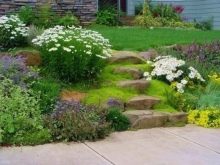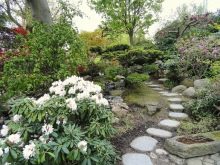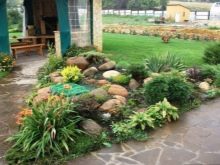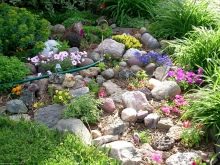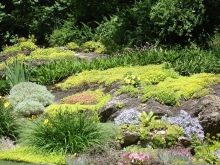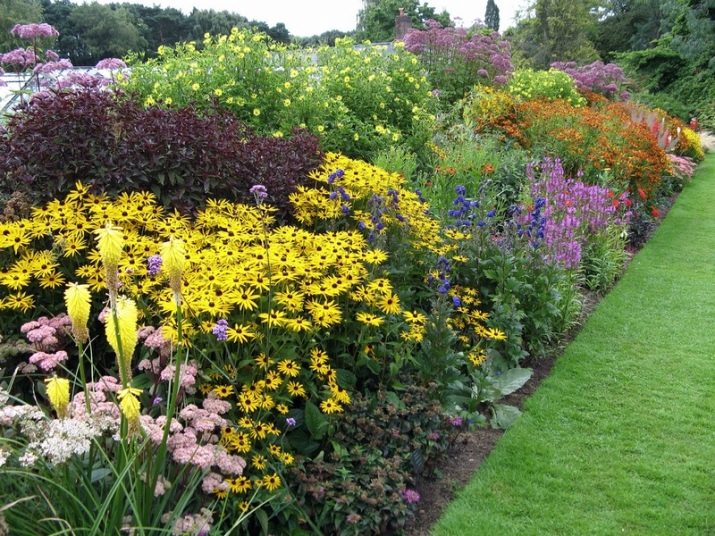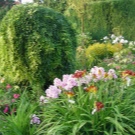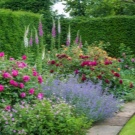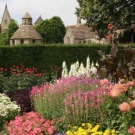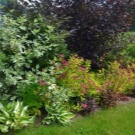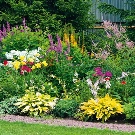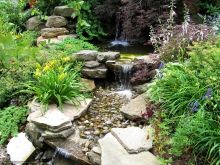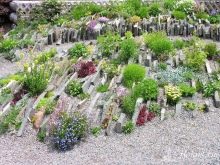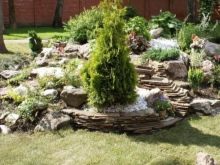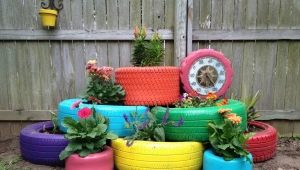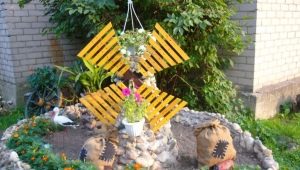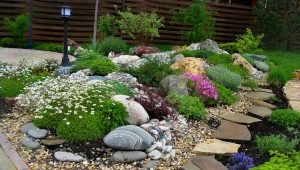Alpine plants: names and care guidelines
When creating an alpine slide with the help of successful combinations of ornamental plants, flowers, coniferous and deciduous trees, stone, you can achieve incredible results and get that unique and bright corner of your garden that will allow your site to be the most beautiful and unusual.
Special features
The construction on its site of the alpine slide is a difficult task, though very interesting, although it has its own characteristics. If you decide to create an alpine slide and break an unusual flower garden, you should figure out which plants are most suitable for this.
If you have already decided on the place where your alpine slide will be located, prepare boulders of various shapes and sizes. The next step is to prepare the drainage. For him, you can use the leaves, dry grass, slivers.Drainage from above must be filled with soil. You can arrange the stones on your own.
Keep in mind that the height of the alpine slide will be lower, as the drainage and the earth will eventually settle down a little.
What plants to plant?
In order to make an alpine slide a matter of pride, certain rules should be taken into account, because not every plant can be suitable for its creation. It is necessary to take into account at what time and at what time a particular plant blooms. Do not forget that some plants are incompatible with each other. It is necessary to pick flowers with different flowering periods, in this case they will delight in violent color throughout the summer and autumn.
Most often in the creation of alpine slides planted low-growing plantssuch as nasturtium, daisy, primrose, salvia, silverweed and others. You can create a certain accent with the help of undersized conifers by adding a few large trees and shrubs.
Planting conifers, you can admire the area throughout the year. Plant a pine tree on it, various types of juniper. Ephedra ideal for creating interesting exterior, will allow your site to become the most beautiful and spectacular.
From junipers should pay attention to the variety Mint Dzhulep, which has arcuate branches with hanging shoots. The plant has a very beautiful mint color, for good reason it is called Mint Cocktail. Even in winter it retains an incredibly beautiful color that will give your site attractiveness. Juniper grows quite high in a dozen years, it reaches almost two meters in height and about three meters in width, so most often the plant is cut.
Medicinal plants such as chamomile, sage or rosemary can be planted at the site. You can not only admire, looking at them, but also use for treatment and in cooking.
Before planting plants, make sure that all of them were planted taking into account the cardinal directions and could always receive a sufficient amount of light and heat. Most of the plants grow well only on the south side. On the north side, less capricious plants can be planted, such as a bell, a crocus, a chrysanthemum.
When planting plants in a flower bed, do not overlook the creeping carpet plants. This mixture will create the perfect composition.Often gardeners decorate their plot with ground cover plants. Such a blooming perennial rug will decorate an alpine slide, flower beds or rock arias, especially since they do not require special care.
Creating an alpine slide without a certain experience is quite difficult. If possible, invite a landscape designer or use the photos to find the best option and start creating your own. To make the plants look harmonious and not interfere with each other, they are planted in tiers.
It should be the first to plant trees and tall plants. They are located near large stones in the background. The whole hill can be littered with low-growing perennial plants. So with the help of tiers, it is possible to visually divide the planted plants.
While there is time for perennial and long-growing plants to grow, annuals, such as marigolds and purslane, can be planted.
List of the most popular
Many plants are suitable for planting on alpine hills. Attention should be paid to periwinkle with its delicate blue flowers, which helps to create an excellent cover.Periwinkle blooms for a very long time - from late spring to mid-autumn.
Looks good on the site of saltanella. It blooms in white or blue, looks like a bell, its leaves look like a small heart. The plant is unpretentious in the care, grows well in drained moist soils.
You can land on the site asparagus and sun light. It looks very impressive in a flower bed grouse. These flowers belong to the perennial, because of their color, they got their unusual name. There are different colors - from snow white to orange, purple and motley. These flowers have many varieties, they can be of different sizes and grow from 40 cm to 1 meter. Grouse grows well in the penumbra. After a few years, the flowers are transplanted to another place.
I want to draw attention to the barberry. It will look very organic on your site, because it has a very diverse color of leaves - from green to yellow, purple, variegated, spotted. The plant can be of different sizes. It grows very high - up to three meters in height, it can also be a very small dwarf shrub up to 30 cm in height. Such a plant will certainly become an adornment of an alpine slide.
And what are the cost of lavender flowers with their breathtaking aroma, which is impossible not to know! Flowers with violet, pink and pale blue hues will decorate the flower arrangement.
Considering that more time is needed for perennial plants for growth than for annuals and bulbous ones, it is better to start planting flowers in flowerbeds from them. You can find and plant the most beautiful and rare plants and varieties that will delight the eye all summer, while perennials can bloom only next year.
By planting annual plants with bulbous plants, it is possible to see the magical transformation on the plot from early spring, the whole garden will begin to shine with all sorts of bright colors.
To refresh the site, make it play with bright colors, fit:
- immortelle flowers;
- snowdrop;
- crocus;
- tulips of different varieties;
- muscari
By planting annual plants on an alpine hill, you can make it the most attractive. With their help, you can hide still empty places. But here you need to be careful and try to make an unusual garden with stones, and not just a flower bed, completely covered with different flowers.
Not to mention the marigolds. Having planted a charming annual plant, it is possible to observe its flowering from the very beginning of summer right up to frosts.All your favorite flowers love heat and light, but you shouldn’t flood them with water, as they do not tolerate excessive moisture. These long-flowering bright flowers are sown in spring with seeds, in order to admire them during the warm season.
Creating a rock garden on the site, should be preferred perennials.
They can decorate stones, bending around beautifully and leaning over them. Most perennials bloom up to 80 days, which greatly decorates the site. But even after flowering, such plants retain their attractiveness for a long time because of their decorativeness. Often, perennials can bloom closer to the fall with proper care for them. Such flowers tolerate drought and frost well, are well adapted to any type of soil. Perennials are propagated by dividing the bushes by grafting, sown with seeds.
It is necessary to plant graceful or zigadenus antiqua on the site, because the plant is really very elegant. It starts blooming from the beginning of summer, has small yellow flowers in the inflorescence, plant height is up to 70 cm. Anti-glue will take root well in stones, on wet soils, does not require shelter from winter frosts.
And how compact will look Armeria on a bed with pink flowers.It is better to plant the plant in open sunny places with well-drained soils. Does not require shelter for the winter. Perhaps a slight freezing in the most severe frosts.
As for geranium, it can grow not only on your window sill. Balkan geranium can be planted in a flower bed. This is a perennial that blooms in June, then re-pleases us with a bright color in the fall. Geranium adapts well to different types of soil, it can grow in the sun, and in a shaded place on moist soils.
Do not remain without attention and irises. These are perennial rhizome plants that can be found on all continents. More than 800 species of this genus. The shape and color of flowers is so diverse that it is simply impossible to do without them on your flower bed. Irises begin to bloom in early spring, delighting with bright unusual colors, some varieties may bloom in autumn.
Rejuvenated refers to the most unpretentious plants. It has fleshy leaves, collected in a kind of nodule. Because of its appearance, it looks young like a stone rose. These spectacular stone roses can have different colors and shapes.Molodil will reliably strengthen your site, as it can take root in the most inaccessible places, in the cracks.
Shrubs
Choosing shrubs for alpine hills should be borne in mind that many of them shed their leaves in the fall, and it's not very convenient to clean them. Therefore, it is better to dwell on the coniferous group of shrubs, which are also very decorative.
One of the most popular can be called horizontal cotoneaster - the shrub is very compact, with small dense leaves. In autumn, the green leaves change their color and become purple. And the fruits that ripen in autumn and persist throughout the winter, will be a bright decoration of your site.
Pay attention to the evergreen barberry. The plant is not demanding on the soil, grows well in the sun and in dark areas. It tolerates cold, requires shelter only in the most severe frosts. Begins to bloom in May and for a long time pleases with bright juicy greens.
Iberis evergreen is a short, about 50 cm tall plant with a pleasant aroma. The first buds begin to appear in May and within two months the bush pleases with lush flowering. Soils are better to choose sandy, stony.The plant should not be planted in the shade and in places with plenty of water. In severe drought, watering is recommended.
Among such a variety of plants can be confused. Choose what you like, but do not forget to take into account all the subtleties of their mutual influence, follow simple rules for care and you will see the result you dreamed of.
How to combine?
Mostly in rock gardens and rockeries are planted:
- low-growing conifers;
- ground cover, creeping plants;
- one-year;
- perennials;
- bulbous.
For bulbous plants should not be allotted a lot of space, they are planted together with ground cover flowers.
With the help of these plants you can weave a magnificent living carpet on the plot. Use boulders and conifers, this is the basis for creating rock garden.
The saxifrage is exactly the plant that will give your garden a unique look. Kamnelomki bushes are very decorative, with a lot of sockets, forming a dense carpet.
Plant arabis and you will enjoy the incredible aroma of this honey plant. White flowers, blooming in May, extraordinarily beautiful.It grows very quickly, therefore, just like that of saxifrage, the extra layers are promptly removed from it.
If you want to please yourself with double flowering, plant obriettu. This is a perennial plant that will create the appearance of carpet. From early spring, the plant begins to bloom and pleases the eye for a month and a half. Cut off the shoots after flowering, and in the fall you will see a new flowering.
When planting ground covers, you should not get too carried away, as they grow very quickly and can interfere with the growth of other species.
When selecting plants for planting in rock gardens should take into account climatic conditions and their own preferences. Choose undersized and slow-growing crops.
Perennials will be the most suitable for landing on the site. Consider the periods and duration of their flowering. When landing perennials with different periods, you can admire the constant color and decorativeness of the slide until the end of autumn. In winter, your site will be decorated with coniferous trees, and from early spring - annual plants. Adhering to certain rules, you can create a successful composition on the site. Get creative,and then the alpine slide will be your pride for many years.
Landing pattern
In order for your site not to be chaotic, you need to properly design a landing scheme. Plants should not interfere with each other, but should look harmonious and in place, so it is better to plant them in tiers. On each "floor" certain types of plants are planted.
At the foot, as a rule, have moisture-loving plants that prefer richly fertilized soil.
Give preference to herbs such as soddy pike, young, and saxifrage. In the middle tier planted not so fastidious plants that are well tolerated shade. Plant phlox, primrose, supplement with ground covers. The peak is a place for perennials, annuals, bulbous plants that start blooming very early. Plant iberis, creeping thyme, ulissum, edelweiss on top.
Pay attention to trees and tall grassy plants. They are planted first near large stones. For low-growing perennials everywhere there is a place. They can be landed on the whole hill. Visually divide the tiers with stones or tall plants.
Care
For the rock garden should be constantly and properly care. It is necessary to ensure that the plants do not dry out, you need constant watering. Permanent work with weeds will take a lot of your time. Weeds can regularly appear on your site. Constant weeding is very important, as these harmful plants are very dangerous. These include woodlouse, bluegrass, tear down common and others.
When removing weeds, make sure that they are pulled out from the roots, not hooking the plants growing nearby. It is necessary to fight with weeds at the earliest stage of arrangement of a flower garden. When preparing the soil on the site carefully choose all sorts of roots, do not allow them to grow. Mulch the top of the soil with coniferous bark with rubble and discard the annual weeds.
With the help of mulching you can get rid of not only weeds. This will retain the necessary moisture and will prevent the formation of a crust on the soil after the rains. Mulch looks pretty decorative, will help give the site a natural look.
Proper watering is the key to good plant growth. Water them carefully, the jet should not be strong, so it can wash off small plants. Water should penetrate the soil, not flow like water.Start watering from the bottom of the alpine slide, climbing up. As soon as the leaves cease to shine, they become less elastic, they lack moisture. Watering is carried out 1-2 times a week, depending on weather conditions and other factors.
Proper plant nutrition is needed. It is enough to do it once a year, better in early spring. Approach fertilizer plants individually.
Diseases and pests also take enough time. Remove debris regularly to avoid slugging. View your rock garden, get rid of pests, cut off the affected leaves. Aphid, slug and snail can add hassle, you can deal with them with special preparations Confidor, Aktar, Operkot. With the defeat of gray rot, it is advisable to apply Fundazol, Horus, Teldor.
Creating and maintaining a rock garden requires a lot of time and constant work. Starting in early spring, work begins to boil. It is necessary to remove last year’s leaves, remove the film from the plants, pour on the ground or reinforce loose stones. Constantly it is necessary to monitor the flower bed, fill the ground, loosen the soil, thin out.Once the plants have bloomed, remove the seeds. So the bushes will become more attractive and do not sow all around. Annuals and perennials that have lost their beauty and decorative, it is better to replace with new ones.
Bulbs are planted in the autumn. They should be planted until mid-autumn, so that they are well rooted. Bulbous, which can not spend the winter, dug up and stored in basements. Coniferous trees are tied and tied so that they do not break under the weight of snow or wind. Some plants are covered with foil to avoid freezing.
Before the onset of frost should be well watered all plants. This will allow them to be saturated with moisture before a long wait for the next season.
Spectacular examples
As you can see, the creation of an alpine slide is really not an easy task. If you are not yet ready to make this dream come true, try to make a mixborder in your country house with your own hands. His creation will definitely appeal to you. It can be used as a curb when planting a hedge to hide unsightly areas on the territory or to mark the boundaries between areas.
When picking up plants for a mixborder, use all kinds of plants - plant low-growing ones,highly growing, ground cover. An excellent option would be to plant a spherical thuja with short flowers. At the same time, monotonous greens of coniferous or dome-shaped deciduous trees will look great with low-growing bright flowers, for example, with a multi-colored petunia or irises.
Alpine slides will be well complemented with paths that are laid out with flat stones, various garden sculptures, garden gnomes. If your plans are to create a decorative fountain, then you can not do without the advice of a specialist. It is better to do this before you start planting plants. But if the rock garden is equipped with you for a long time, you can solve this problem. It is important to think about the water intake system; the location of the pump may have to move several chick boulders. But in the end you will reach the goal and get an amazing beauty of the pond on your site, which will delight you and your guests with its beauty and the calming murmur of water.
No less colorful looks flowerbed, blooming with many bright colors. Properly selected plants will allow you to carry out your plan and get an excellent result.
Start the process today, and very soon on your site will be a beautiful alpine slide - the subject of your pride.
Tips for creating an alpine slide can be found in the following video.
